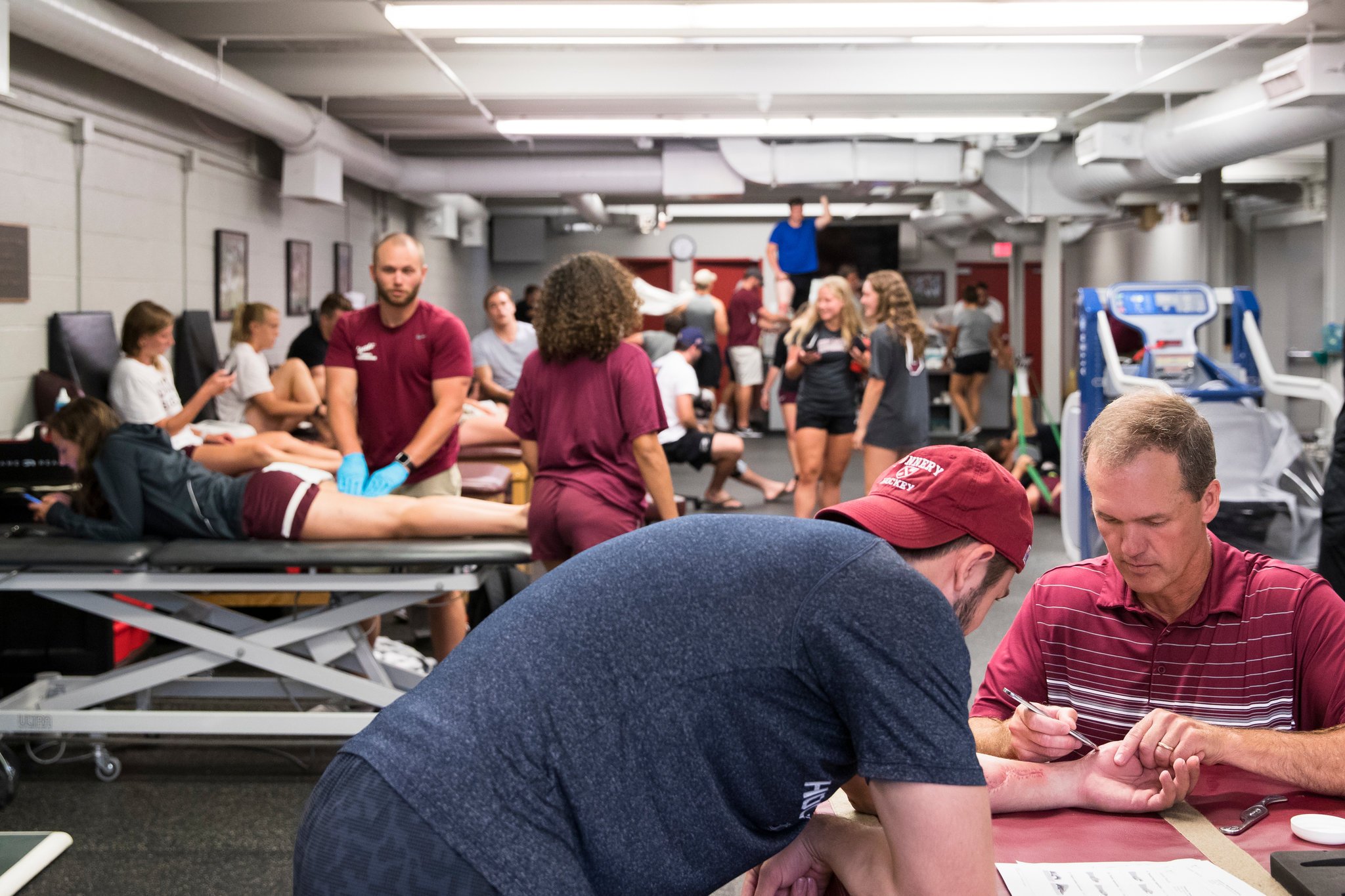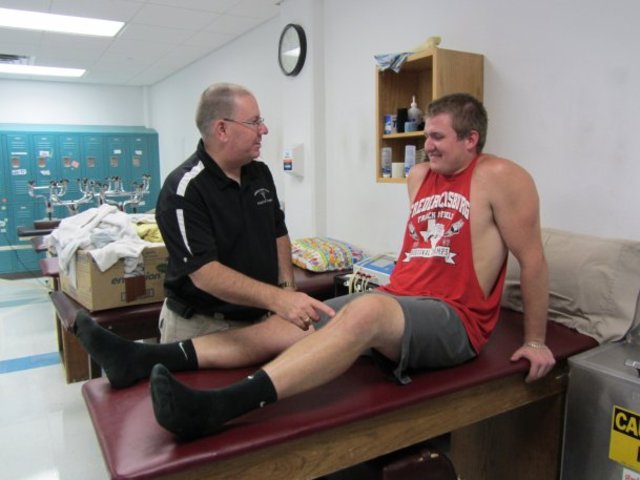
Article reposted from The New York Times
Author:
The first thing Colgate University did was purchase a sophisticated $14,000 machine that used ozone gas, not water or detergent, to disinfect all its athletes’ gear. An ice hockey player had come down with a staph infection, and Colgate, fearing the severe and sometimes fatal form of it known as MRSA, was not going to take any chances.
The university didn’t stop at gassing gear.
Out went the shared bars of soap in the Colgate showers. Water bottles were sterilized nightly. Athletes in contact sports got two or three sets of equipment so one set could always be sanitized. Even the university’s furry mascot costume was regularly blasted with ozone gas.
That was a decade ago, and Colgate, like many schools, is still fighting the germ. This year, among other measures, it unveiled plans for a cutting-edge system that would zap locker rooms with a decontaminating fog of hydrogen peroxide and silver to leave an anti-bacterial coating on every surface.
“It’s not weird anymore to implement these kinds of advanced tools because technology has really helped,” said Steve Chouinard, Colgate’s director of sports medicine and an athletic trainer. “We sprung into action, and you consider every possible way to keep the athletes safe.”
By the thousands, high schools, colleges and professional teams have followed Colgate’s path with aggressive, almost obsessive, steps to prevent MRSA outbreaks
And yet, the battle is not won. It has become a never-ending fight against a hidden foe that resists conventional antibiotics. And in the sports world, where the bacteria can flourish in crowded gyms and locker rooms, and amid frequent skin-to-skin contact on the playing field, there is not even a scoreboard to definitively keep track of who is winning.
The disease has disabled some athletes, cutting short their careers, and the most severe cases have been fatal. Ricky Lannetti, a Division III all-American wide receiver at Lycoming College in Pennsylvania, died from a MRSA infection in 2003.
Two seasons ago the Giants tight end Daniel Fells contracted MRSA in his lower leg and spent several tense weeks in a hospital as doctors contemplated amputating one of his feet. Fells retired from football 10 months later. In 2013, three Tampa Bay Buccaneers came down with the infection — two never returned to the field.

Such cases have generated enough anxiety that teams have pulled out all the stops to eradicate the germ or to prevent it from settling in.
Although the most recent study by the Centers for Disease Control and Prevention, in 2015, reported a decrease in MRSA infections in the general public since 2005, it is difficult to tell what is happening in locker rooms because there has been no study specifically on sports. Anecdotally, based on the number of cases they have treated in recent years, athletic trainers and team doctors nationwide have insisted that MRSA cases in sports declined substantially in the last decade. But they, too, have no data.
Moreover, the movement to curb MRSA in athletics is butting heads with new behavioral trends — like some teenagers’ dogged aversions to showering after games and practices — that imperil the best preventive efforts.
Likewise, practices like body shaving, which has become more popular among young people and can cause tiny cuts that allow MRSA to propagate, have been shown to increase the risk of infection sixfold, according to the National Athletic Trainers’ Association.
Football, like any sport with frequent skin-to-skin contact, continues to be a breeding ground for the disease. Professional football players are seven to 10 times more likely than the general public to have MRSA bacteria on their skin, according to Duke University researchers.
“It is a job hazard present for people who play football,” said Dr. Deverick Anderson, a director of the Duke Infection Control Outreach Network, which serves as a consultant to the N.F.L.
MRSA, the acronym for methicillin-resistant Staphylococcus aureus, was once mostly found in hospitals, clinics and other health care settings. About 20 years ago, it began afflicting athletes in contact sports.
Over time, hospitals and other medical facilities developed more stringent hygiene routines that successfully reduced the prevalence of MRSA. It is these best practices that professional teams and athletic departments have spent the last decade emulating.
Sports teams, even at some high schools that have the necessary budget, tended to ramp up their preventive efforts with avant-garde measures.

In the N.F.L., the effort to curb MRSA now borders on a crusade, with an official prevention manual that is 315 pages long. There are meticulous protocols for dozens of procedures, right down to the approved method for refilling the anti-bacterial solution in hand-sanitizer dispensers, which are now omnipresent in locker and weight rooms. (Prepackaged containers are preferred to topping off the dispensers with a large jug — a process that can spread contamination.)
The best-intentioned and most sophisticated tactics, however, can be undone by the simplest omissions. At the high school and college levels, the downfall can be players who refuse to shower with teammates, which is common. A shower can greatly diminish the chance that exposure to MRSA in practice or in a game will lead to an infection.
“It’s like pulling teeth to get the athletes in the shower,” said Bernie Stento, an athletic trainer at Chesterton High School in Indiana. “Some kids are very squeamish about it. After practice, they’re sweaty and have dirt and mud on them. In football, they might have cuts, scrapes and abrasions. I say to them, ‘Guys, without a shower, we’re inviting infection.’
“But just as a practice ends, I’ll be taking things off the field and see kids leaving already.”
It’s a phenomenon discussed often among coaches and trainers.
“It started 10 or 15 years ago, and now there are a lot of social stigmas with the shower in a school setting,” said Bart Peterson, the head athletic trainer at Palo Verde High Magnet School in Tucson. “I don’t know, maybe they don’t want the hazing. But it’s pervasive.”
At Colgate, which is in upstate New York, a fervent education program has changed habits.
Owen Buscaglia, a junior wide receiver at Colgate, said he and his friends in high school considered it weird to shower after practice.
“Now it’s weird if you don’t shower,” Buscaglia said.
Across the nation, the efforts to foster proper hygiene involve far more than shower routines. Some teams buy athletes their own water bottles to deter sharing.
To prevent teammates from sharing towels to wipe their faces or arms on the sideline, trainers have sometimes employed a small army of interns who scoop up any used towel so it can quickly be placed in the laundry. Jim Thornton, the athletic trainer at Clarion University in Pennsylvania, said his teams had begun using chemically treated towelettes that are about half the size of a standard towel and are discarded after each use.
The expense may be worthwhile. One study of high school football players concluded that sharing a towel makes the chance of a MRSA infection eight times more likely.

In wrestling, where the occurrence of skin disorders has been elevated for decades, many college and high school teams mandate frequent examinations for suspicious lesions. In all sports, the ubiquitous training tables, where athletes receive treatment, are now subject to regular, thorough disinfection. Athletes are required to shower before entering any kind of pool or tub used for therapy.
With athletic teams soiling hundreds of pounds of jerseys, T-shirts and padded equipment on a daily basis for sports like football, hockey and lacrosse, a cottage industry has sprung up to rid that gear of bacteria that might lead to a MRSA infection.
High-tech laundry systems — featuring programmable chemical disinfectant injections, high speed water extractors and synchronized cycles that assiduously monitor water levels and temperatures — have become commonplace. Ozone gas machines, like the Sport-O-Zone manufactured in Elkhart, Ind., can be found in equipment rooms from the N.F.L. to small public high schools.
Infectious disease experts are more likely to emphasize other elements of a comprehensive MRSA prevention program, but they do not spurn the emerging devices.
“I would think it would make a contribution to the reduction of staphylococcal infection in the athletic environment,” Dr. William Schaffner, an infectious disease specialist at the Vanderbilt University Medical Center in Nashville, said of the ozone gas machines.
At Bowdoin College in Maine, Dan Davies, the athletic trainer, said the college had not had a MRSA case involving an athlete in the 10 years since it bought an ozone gas unit. That track record has motivated Bowdoin officials to consider installing a system that would fill the locker rooms and the training room inside the college’s new facility with ozone gas transmitted through the heating and air-conditioning ducts.
Overnight, custodians would lock the doors to the building serving Bowdoin’s football and lacrosse teams, then turn on the ozone gas. The facility is to open next year, and while the new system could add to the renovation cost, Bowdoin, like so many other institutions, may decide it is worth the price. The college once had a MRSA scare.
About 10 years ago, a Bowdoin athlete was unaware he had contracted MRSA, and with a contagious, open wound on his leg, he wandered around the campus — to the dining hall, the weight room, the locker room and the coaches’ offices.
“That gets your attention,” Davies said. “We said, ‘Oh, boy, we’ve got to sit down and make a game plan to fix this.’ We took the stance that we’ve got to push prevention to the forefront. And we haven’t turned back.”
